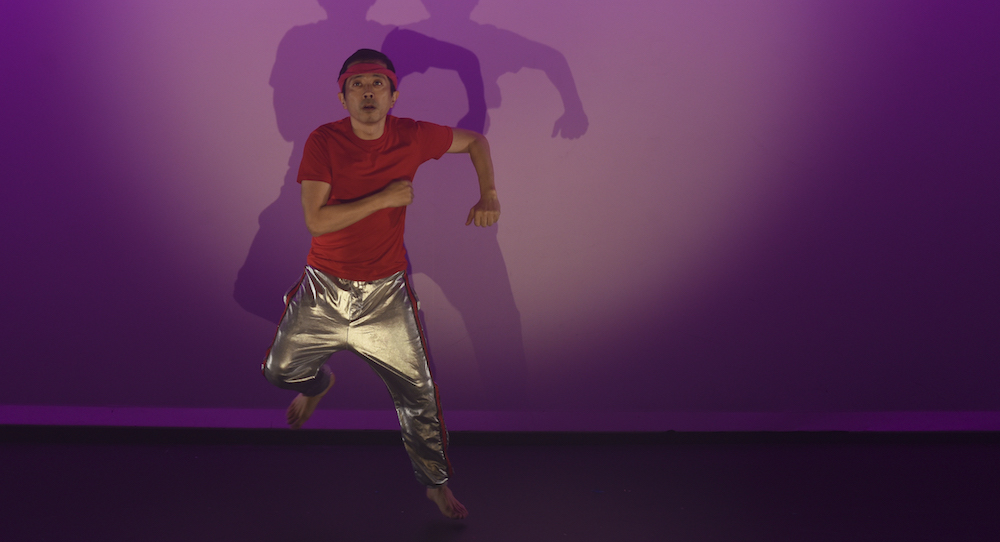Riverside Theatres, Sydney.
11 August 2022.
Let’s DANCE, the latest offering by FORM Dance Projects in collaboration with Riverside Theatres, was presented this week as a part of the exciting programme for Dance Bites 2022. The double bill consisted of two short works, by Ryuichi Fujimura and Chris Chua.
Fujimura’s Fall! Falter!! Dance!!! opened the night, an autobiographical exploration of the experience of a contemporary dancer. Fujimura explored the idea that the opportunities of an independent dancer are often, albeit ironically, at the whim of others. A few perspectives were shared, including the variations of performances, and how one experience may feed the next, although perhaps in some ways one can sabotage the other… Rejection in a variety of contexts, e.g. being told straight up you’re not needed, or being promised the world but in reality not being used much at all in the rehearsal process and wondering why you are even in the room…and then having to address that whilst trying to keep your job. Overall, exploring the toll on oneself of working with an industry full of temperamental choreographers and opportunities.
Fujimura’s approach to his subject matter was comical, yet honest, open and sometimes quite raw. It touched at the very heart of something most dancers would experience at one point or another in their career. The concept that time is short, opportunity is rare and therefore we often take whatever we can get no matter how small, and we put up with a whole lot of difficultly to stay working.
Fujimura questions why we need to perform in the first place. Is the joy in the performance, or is it in experiencing the artform itself, therefore, is performance truly necessary? Which is the more important in the long run? He made references to the film Frances Ha and his personal interactions with writer/lead actor Greta Gerwig, in which similar questions are asked: Do we get what we want or what we need? And if we can find peace with this, perhaps we will find fulfillment.
Fujimura made no attempt to plead his own case, no attempt to show off his technical prowess, making light of the ridiculousness of some roles he has landed, with all the hard work of a lifetime, and nothing really to show for it when it comes to the stage. He certainly had the audience in the palm of his hand as he landed a standing ovation and rapturous applause at his honest approach. Any dancer sitting in the audience would have felt with him the highs and lows. It was brilliant.
Chua’s work BeatStorm is an interactive computer game, using motion capture technology, and is reminiscent of games such as Wii’s Dance Dance Revolution and Guitar Hero, where players are required to match the musical notes as they scroll down the screen. Nasim Patel performed with Chua, demonstrating how the game is played.
The background music for Chua’s work is electronic dance music, not ’80s and ’90s rock music as in Guitar Hero; however, the concept is the same. When players hit the shapes required to play the notes, they add to the track as a planned melody. There is no room for creativity or playing around with the soundtrack, and the work does not come across as particularly choreographed. Spontaneous creativity comes with the movement chosen by players to score and ‘collect’ items on the screen, and ‘miss’ the obstacles that might lose them points or kill the player. However, it is not clear that this would be any different from the aforementioned games, and there is nothing unusual or particularly choreographic required of the players to succeed. Chua would have had to play with bodily shapes to create a work that visually flows, and requires various movement and levels of the body to succeed as a player. A high level of spatial awareness would have been required to create this game.
At the end of the work, the audience is invited to have a go. As a game, it is fun, and the music is rather mesmerising; however, you do need to be on the smaller/shorter side so as not to block the objects with your body as the technology and viewing is limited by whoever is standing in front of the motion capture device.
Chua introduced the work verbally but did not explain the scoring system, nor why this game was particularly choreographic, so it was not particularly satisfactory viewing, as neither of these things became overtly clear throughout. There is much room for development and emersion of the field of choreographic work and video games, to allow this work to justify being called a dance work. Perhaps something that goes beyond a scoring system and requires some level of more unique creativity from players. Perhaps being developed into a choreographic work, considering works such as Chunky Move’s Mortal Engine, which was ground-breaking in its time and integrated both the technology and movement with equal importance, developing into something unique to Chua and the world of video games. There is a huge amount of yet untapped potential in what Chua is exploring, and this does not yet feel like a finished work or process.
FORM Dance Projects always bring a wonderful variety of work to the space at Riverside Theatres, this season being no exception. Keep on the lookout for more exciting and unique work on offer over the next few months.
By Linda Badger of Dance Informa.

















